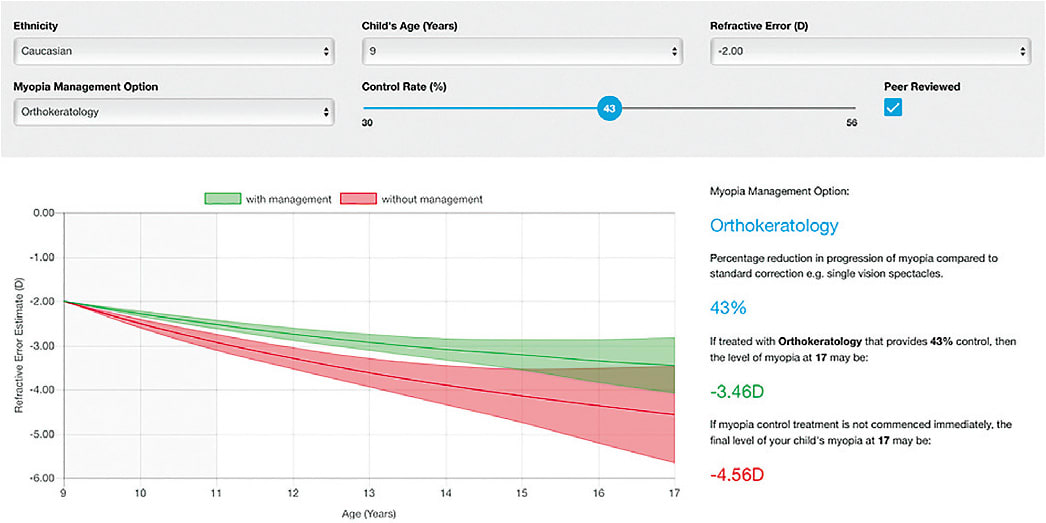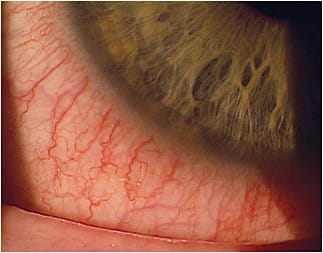As contact lens practitioners, we have the capability to choose from a wide variety of contact lens materials, designs and modalities. We also have the strength of our team and the technology to provide an excellent patient experience. The design choice, as well as our advanced fitting techniques, may improve ocular health and visual clarity for our patients. Let’s ensure we’re able to offer these items by having the infrastructure and mind-set of an advanced contact lens practice in place.
In consulting with my colleagues, an advanced contact lens practice includes: offering new technologies, fitting unique specialty lenses, having the right attitude and passion for the subject — essentially, offering that something extra to your patients. (See “Define ‘Advanced Contact Lens Clinic,’” below.)
Define “Advanced Contact Lens Clinic”
HOW TO DEFINE AN ADVANCED CONTACT LENS PRACTICE, as sourced from colleagues, Drs. David Anderson, Justin Bazan, Tim Fries, Mile Brujic and David Kading. Here is the consensus:
- It starts with an attitude, a passion and a willingness to do something out of the box or out of the ordinary to make a patient happy and healthy with contact lens wear. Basically, it is what you can’t get just anywhere — “advanced” takes something extra.
- The ability and confidence to fit that something extra, scleral lenses, high-level astigmatic/multifocal fits (soft and RGP), hybrid lens designs, orthokeratology, myopia control, keratoconus and post-surgical designs. (It does not have to be all of these.)
- An advanced contact lens clinic incorporates the latest technology, including fitting sets and a topographer, and trained staff. Having the proper equipment and training necessary to provide advanced contact lens care will take some preparation.
- An advanced clinic likely fields referrals from other sources: optometrists, ophthalmologists and other health care professionals.
- An advanced contact lens clinic takes the time to incorporate and educate their patients on the newest contact lens technologies. This includes via delivery methods. Make it easy for patients to obtain their lenses through your office.
Here are three steps to develop this clinic.
1 DOCTOR AND STAFF TRAINING
Like we discussed, it starts with an advanced attitude. You should be an authority on your subject matter. Look to gain new contact lens knowledge by, for example, attending meetings, such as the Global Specialty Lens Symposium*, Optometry’s meeting, the American Academy of Optometry meeting and even local conferences where live specialty fittings can enhance the learning process.
Consider that patients often spend more time with your staff, and this is even more true with your advanced contact lens care. As such, staff preparation is key. Ensure that you have a staff member to fit the needs of your advancing practice. For example, this person should be prepared every day to provide insertion and removal/care training, as well as an understanding of how to care for these specialty products. This training could include a certified paraoptometric technician certification, via the AOA, which includes advanced technician training in multiple areas of eye care, along with skills on how to modify contact lenses and explain contact lens care systems.
You may be discussing contact lenses with many patients, but, if the staff hides when you are looking for help, your number of advanced contact lens wearers will not grow. Knowing who that person is and that staff is ready to go when needed will remove that potential barrier to success.
2 INFRASTRUCTURE
Infrastructure decisions should be set up and organized ahead of time. This includes: fitting sets in-office, having proper accounts with specialty lens labs, advanced contact lens fitting brochures (those that will educate your patients on pricing, billing, insurance policies and fitting expectations) and proper contact lens care solutions and eye drops. Consider sending your billing specialist or technician for regional training sessions or to a mentor’s practice to observe the details of their infrastructure.
Proper instrumentation is also crucial. It includes: a slit lamp and corneal topographer. Optional instrumentation could include an anterior segment OCT, anterior photography and specular endothelial microscopy. To grow your instruments, consider your current technology and your budget, then set up a timeline for implementation. Add technology as necessary via practice growth.
3 NETWORK
Now that your training and infrastructure are ready to go, build that network of referrals. This starts with your staff and partner/associate doctors within the practice. Have a staff meeting to ensure everyone on your staff is aware of the new image and offerings of the practice. Where necessary, provide additional information and education, so that all staff members have what they need to be an integral piece of this puzzle. For example, your coding staff may need a briefing on applicable codes.
Next, branch out to other area optometrists and ophthalmologists who may need this service, but who do not offer it within their practices. To accomplish this, consider inviting area doctors to your practice for a coffee or a happy hour and a seminar on your offerings, or spread the word individually.
Lastly, discuss your advanced contact lens services with other health care providers, such as school nurses and primary care physicians, who may refer to your practice. Provide them with a brochure that is comprised of the advanced contact lens services you provide. Include a case example, and have it discuss why you have a passion for this area.
ADVANCED CLINIC IN PRACTICE
The difference between basic vs. advanced practices can be illustrated with a few case examples:
Case 1: An 8-year-old’s spectacle prescription jumped from a -1.00 DS OU to -2.00 DS after one year. The patient expressed interest contact lenses. Considering how rapidly her prescription was changing, I knew I needed to recommend a treatment option quickly.
Basic Contact Lens Clinic: Fit her in -2.00 DS contact lenses. Teach her how to safely and successfully wear contact lenses.

While this may be a quick and easy fix for her vision concerns, it does not address her advancing myopia. Studies show we can expect her amount of myopia to reach -4.50 D by age 17 without intervention (See https://calculator.brienholdenvision.org ).
Advanced Contact Lens Clinic: Discuss with her parents her myopia and the associated medical concerns. Offer a myopia control option. Treatment options, such as multifocal contact lenses, orthokeratology and low-dose atropine, are aimed at slowing the expected axial length elongation of myopia. Studies reveal various treatments will slow refractive changes, especially if initiated as early as the myopia begins to progress.
Case 2: A 25-year-old presents asking for an up-dated contact lens prescription. His last eye exam was three years ago. He does not know the type or brand name of reusable lenses he wears. He reports that he changes his lenses only when they bother him, his eyes are chronically slightly red, and he uses OTC red out drops, on occasion, to help.
Basic Contact Lens Clinic: Treat his red eyes with the necessary treatment, depending on the presentation, discontinue the treatment, once resolved, and then refit him in a different, reusable lens.
While this may meet the patient’s request, it does not address his unhealthy practices.

Advanced Contact Lens Clinic: Address his non-compliance by demonstrating the damaging ocular effects to his eyes and discussing the long-term effects of poor contact lens behavior, such as a potential inability to wear contact lenses or undergo any successful ocular surgeries. Go through your protocol — while discussing the price difference and advantages of that modality — to refit him into daily disposable lenses. Have any potential barriers removed, such as diagnostic lenses, follow-up care, shipping, etc., to make facilitate patient compliance.
In each case, both the basic and advanced contact lens practices met patients’ immediate needs. In the advanced clinic, however, we looked at the total problem presented by the patient, addressed the root cause and created a treatment plan. In summary, the advanced clinic approached each case with a passionate attitude, provided a unique solution and offered new technologies. From a patient perspective, which services would you rather receive? OM
*(PentaVision, the publisher of OM, also produces the Global Specialty Lens Symposium.)




